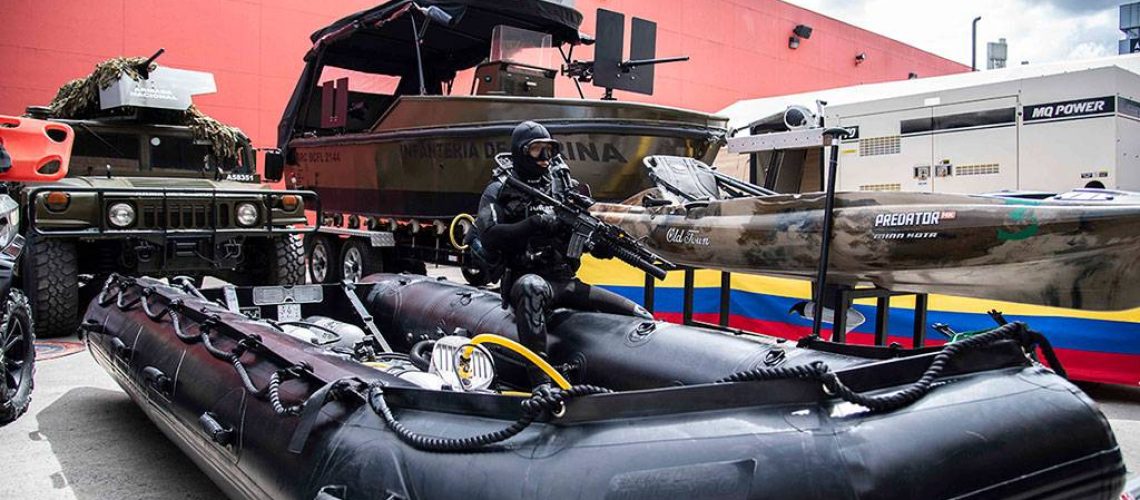Towards improving border controls
Although Latin America has a long history of migration, it has intensified in recent years as a result of political and economic instability and extreme poverty in several states. Security problems are most prevalent on the US-Mexico border and the Argentina-Brazil-Paraguay three-way border. The porous borders between Colombia, Ecuador and Venezuela are subject to population movements and trafficking by guerrilla and paramilitary groups.
The Venezuelan population is massively fleeing the country. Out of 28 million inhabitants, more than 7 million have migrated[1] to several countries, mainly Colombia, which has become home to more than 2.4 million of them. Peru ranks second with around 1.5 million Venezuelan refugees. This massive exodus exacerbates the underlying tensions and the many security risks. To deal with this, cooperation agreements are being put in place, to which technology should provide essential support. The development of advanced border safety systems, such as perimeter detectors and coastal security systems, is highly sought after to combat all forms of illicit trafficking. Surveillance aircraft, drones, coastal patrol boats, aerostats, etc. are essential assets for border security, as are advanced detection and imaging technologies: sensors, advanced laser systems, shared intelligence networks and artificial intelligence. Thales Six-GTS, for example, is developing a protection and surveillance service that incorporates night and day electro-optical systems, surveillance of ground activities and an operations centre that can be jointly operated with organisations such as the UN. Metravib Defence has developed the ground version of the Pilar Metravib system, which can detect gunfire acoustically. The device is designed to protect sensitive sites, refugee camps and humanitarian bases from sniper fire. The system communicates the GPS coordinates of the threat in real time on the map. In June 2021, the Brazilian Air Force (FAB) launched the new Ponta Porã radar station in Mato Grosso do Sul. The station is the third in a series of new radars that the FAB has installed along the border in the centre-west of the country. The first radar station was installed in the city of Corumbá in August 2020 and the second in Porto Murtinho in March 2021. The radar stations are expected to improve the identification of low-flying aircraft in Brazil’s border region with Bolivia and Paraguay.[2]
[1] https://www.r4v.info/es/refugiadosymigrantes
[2] https://dialogo-americas.com/articles/brazilian-air-force-inaugurates-radar-station-and-expands-monitoring-at-the-border/#.Y8lbOi3pNpQ
Civil protection: development ongoing
As the second most disaster-prone region in the world, the American subcontinent is feeling the full impact of climate change. Floods, devastating mudslides, huge forest fires and earthquakes are regular occurrences in this area. In 2020, the UN estimated that in the space of 20 years, 152 million people would have been victims of almost 1,025 natural disasters.[1] These new challenges and the effects of one health crisis after another are putting a strain on the crisis management and civil protection agencies of South American states.
Today, they are trying to lead coordinated responses. The Chilean authorities are investing and reforming their organisation. The National Service for Disaster Prevention and Response (SENAPRED) was inaugurated at the beginning of 2023. With the aim of decentralising crisis and risk management, SENAPRED also wants to step up its work on prevention, planning, organisation and supervision.
Colombia already has a highly operational response system. The army is heavily involved in it. Since 2009, a specialised battalion has been created, the BIADE (Batallón de Ingenieros de Atención a Desastres). Tasked with providing aid and assistance to the population after a disaster, it can also be deployed abroad, as in 2010 in Haiti. The Air Force also intervenes on a preventive level, making its equipment available for the surveillance of active volcanoes in Colombia.
Like Colombia, Chile engages its armed forces in natural disaster management. According to the 2017 Defence White Paper, military institutions are ‘active in the management of natural disasters and national emergencies’. The “deployment of military personnel in such situations is decisive and necessary, especially for reconstruction”. At the organisational level, the prevention and management of natural disasters is coordinated by the Ministry of Interior and Public Security through the National Disaster Management Office, which has military capabilities.
[1] https://news.un.org/es/story/2020/01/1467501#:~:text=Desde%20el%202000%2C%20152%20millones,temperaturas%20extremas%20y%20eventos%20volc%C3%A1nicos.
The popularity of UAVs
UAVs can stay in flight for several minutes and capture high-definition video or images, allowing emergency workers to have a real-time view of the unfolding disaster. They can also be used as a means of transporting medical equipment, in cases where it would be dangerous to expose medical personnel to a virus or where populations are cut off from the rest of the world. The non-profit organisation WeRobotics and the DR Drone Innovation Center have developed a solution based on an existing drone that can carry up to 6kg of cargo per flight.
The private ecosystem is innovating and aims to provide operational staff and decision-makers with effective solutions to better anticipate, detect and address security and humanitarian challenges, and ultimately ensure the population’s protection.


